Onigiri (おにぎり), often called rice ball in English, is steamed rice that is formed into different for shapes with various fillings and wrapped with Nori roasted seaweed. It’s a quick light meal or satisfying snack you can make yourself or buy at many stores in Japan.
What’s Onigiri?
Rice balls, or onigiri, don’t really need a complicated recipe to make. Anyone, including someone who has never cooked before, can start making them right away with just cooked rice. The process is as simple as making a mud ball when you were a kid—just press the rice firmly in your hands and shape it into a ball. That said, there are some helpful tips when making onigiri yourself, keep reading!
Onigiri is a fundamental and incredibly convenient Japanese food that many Japanese people eat very often, with some eating it daily. This popularity stems from the fact that steamed rice is the staple food in Japan, making it almost always available in Japanese kitchens. The beauty of onigiri lies in its simplicity: you need very few ingredients to create a basic rice ball, making it a quick and easy fix for breakfast or a packed Bento lunch to take to school or work.
For those who don’t want to make onigiri at home, convenience is still within reach in Japan. Convenience stores and supermarkets across Japan sell many varieties of onigiri at very reasonable prices. In recent years, onigiri specialty stores have also become increasingly common in cities, offering even more diverse and gourmet options.
Typically, onigiri is wrapped in a sheet of roasted seaweed (nori), which serves two crucial purposes. First, it acts as a wrapper that prevents your hands from getting messy while eating. Second, it adds a distinctive flavor that complements the rice and filling. This portable, self-contained meal can be eaten with one hand, making it the perfect food for lunches, picnics, hiking, or any situation where you need a quick, satisfying meal.
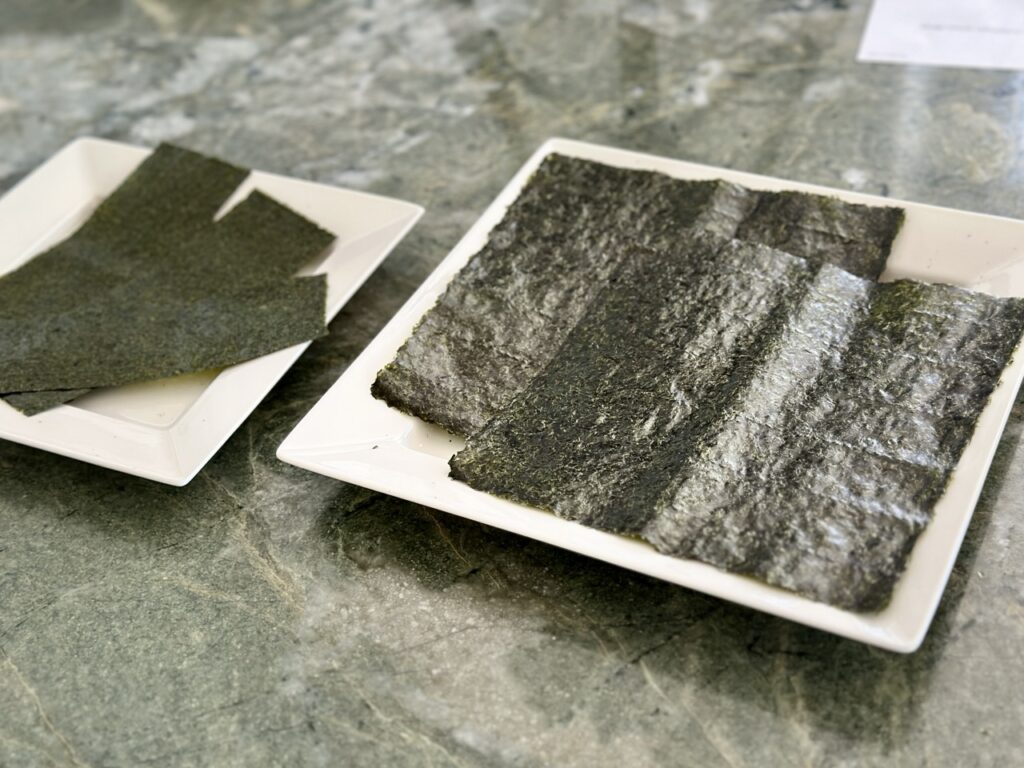
What’s inside Onigiri?
The versatility of onigiri comes from its endless filling possibilities.
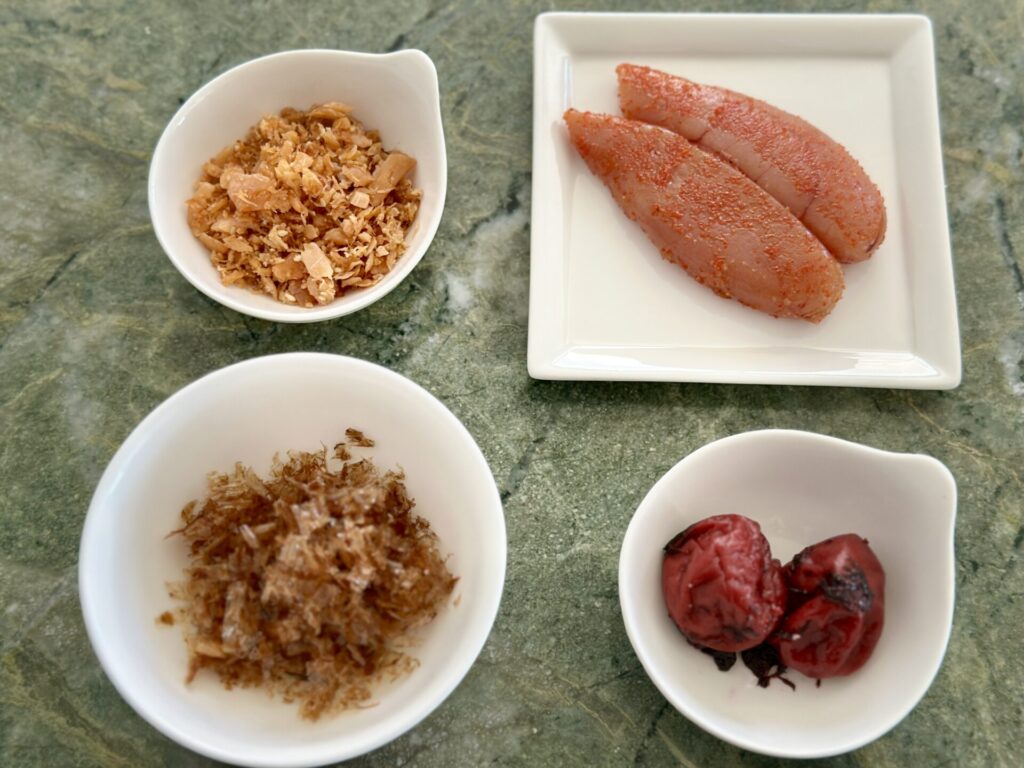
- Pickled sour plum (Umeboshi) – traditional and classic filling that gives saltiness and sourness
- Dried bonito flakes with soy sauce (okaka) – a savory, salty filling that goes perfectly with steamed rice
- Salmon flakes – add a salty flavor to the rice, can be mixed in the rice before shaping
- Mentaiko – pollock or cod roe marinated in salt and red pepper, giving a spicy kick to Onigiri
However, the potential fillings are limited only by your imagination. Some modern variations contain more substantial items like Karaage chicken, Tamagoyaki (rolled eggs), or even Western-inspired fillings.
Tips for making Onigiri
- Because steamed rice is sticky, always wet your hands with water when shaping onigiri. You can also use a sheet of plastic wrap if you prefer not to use bare hands. This helps prevent the rice from sticking.
- Cut Nori (roasted seaweed) to a size that fits the onigiri. If you want the onigiri to be entirely covered, use a larger sheet.
- Keep the filling compact so it fits inside the onigiri and is easy to bite into. If you’re using larger fillings like Karaage, cut them into smaller pieces.
- If you’ve never made onigiri before, watch our video and practice. You can learn how to form triangular or cylindrical shaped Onigiri.
What to eat with Onigiri?
Because onigiri is mainly made with carbohydrates, adding different nutrients to your meal is a good idea. Serve with miso soup packed with vegetables or add vegetable side dishes if you like.
More like Onigiri
Short Video
Full recipe video is also available in the recipe box below and on our YouTube channel.
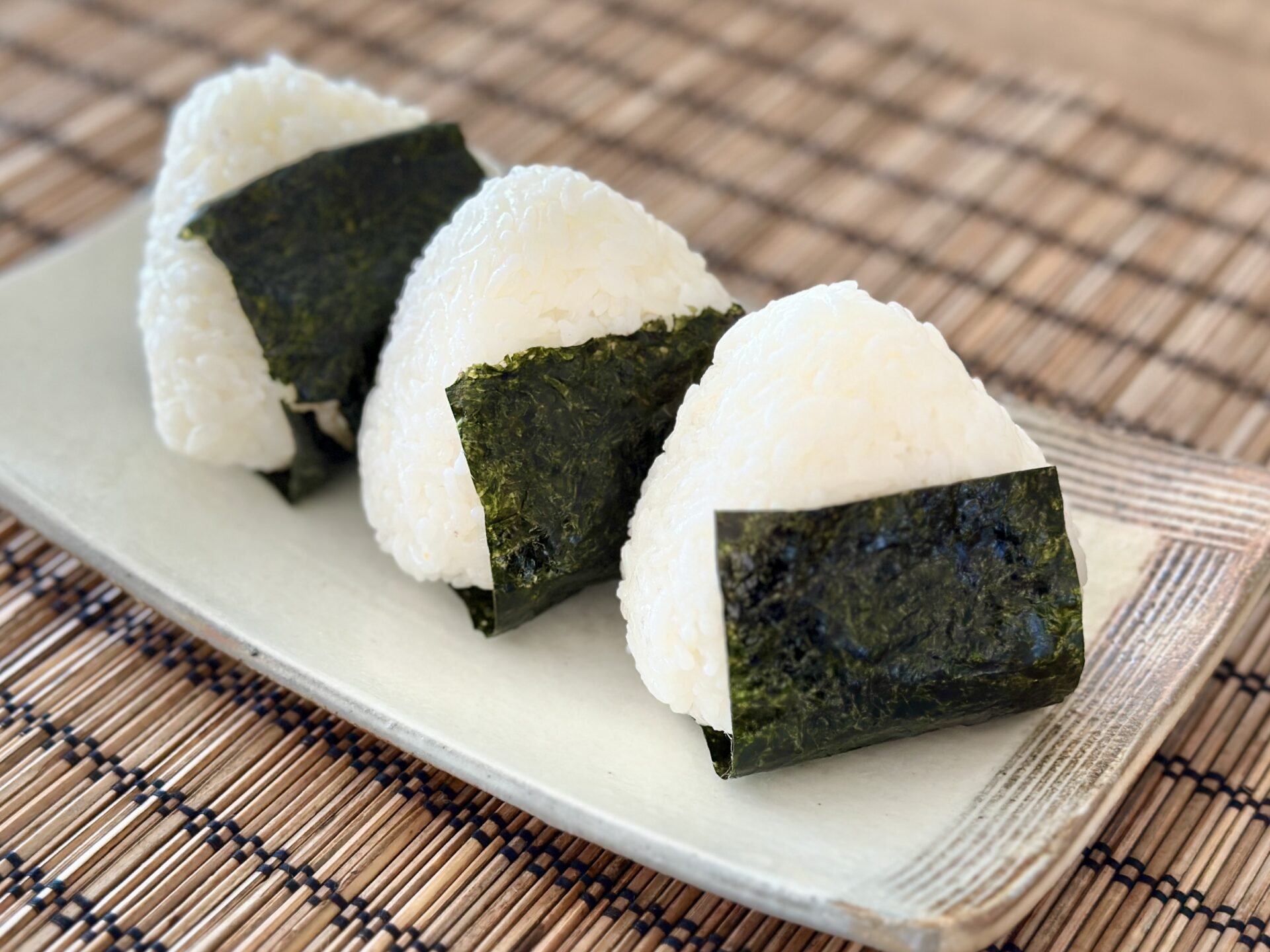
Rice Ball (Onigiri) Recipe
Ingredients
- 2 cups Steamed rice
- 1/2 tsp salt
- 1/2 cup Katsuobushi (dried bonito flakes)
- 1/2 tsp soy sauce
- 4 sheets Nori (roasted seaweed) (small)
Instructions
- Put some rice in a rice bowl.
- Wet hands with water and add salt. Place rice in one hand, press and form into a triangle shape.
- Make a well in the middle of the rice ball and put in Katsuobushi mixture. Close the well.
- Reshape and wrap with a sheet of roasted seaweed.
Video
This recipe was originally published in June 2012. The post was updated on March 26, 2025 with more useful content, new photos and a short video.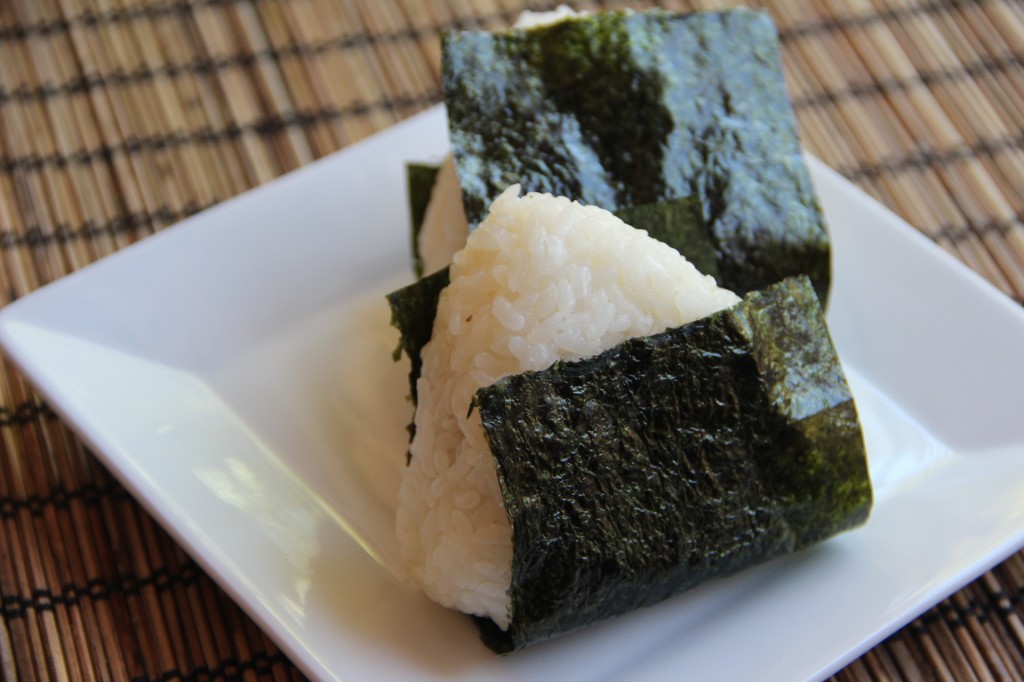
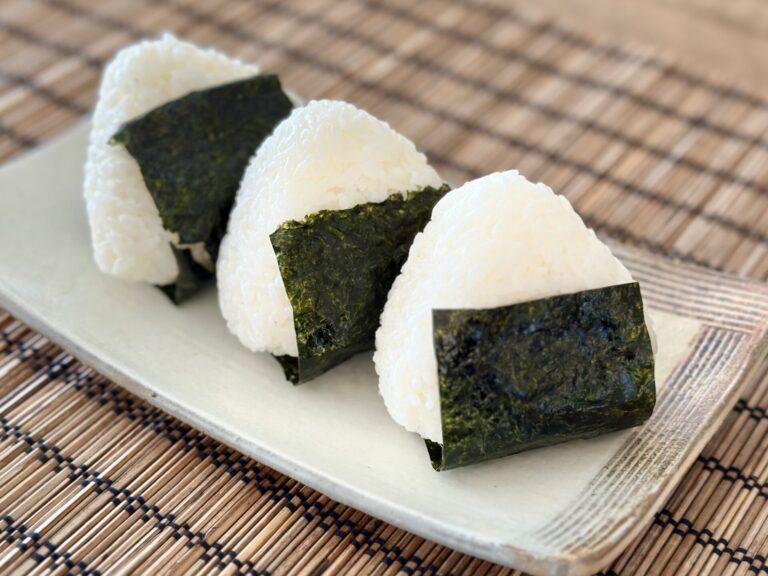


14 Comments
You girls are amazing and beautiful to boot. Keep up the good work and keep you culture alive! My wife and I are going to have a go at the rice balls today. Which I will include some grilled chicken and splash of low sodium soy sauce. I really am glad that you take the time to help people, While teaching them about your culture and culinary feats, and would like to thank you personally. Thanks again!
Sincerely,
Victor Santana
Miami, FL
Thanks for your comment! We’re going to keep making traditional and not so traditional Japanese dishes, so please come back soon!
I bought a small onigiri press at the local Asian market and I just love making rice balls! I usually use shrimp as my filling, but I’ve even used Starburst candies before! (≧∇≦) I’ve never heard of bonito flakes, but it looks like I’ll just have to make another trip to the market! (^_−)−☆
Mari,
wow,Starburst candies in Onigiri! That’s an experiment! But try our Onigiri recipe too!
Wanted to say thank you for the website. I’m making my first rice balls today to mix with the tamagoyaki recipe you provided already, to make lunch for work. Thank you, and I plan on using this site for more recipes in the future
Hi! Is it alright if I insert this link to my blog post? I am writing an article about Asian rice dishes and I would love to provide instructions for my readers on how to make Onigiri and other Asian dishes. If it is alright to ask too, you can read my blog post and share it with your readers. Thank you!
Wilrose,
Thank you for asking (many people don’t…). We’re happy if you use a link to our Onigiri page or the video so long as you provide clear attribution to Japanese Cooking 101. Please do not use copies of the pictures or text directly though.
omg thank you, ur the best. looking around for a good rice ball recipe and found it. simple and easy. cant wait to make other sweets!!!
kira
What can a vegetarian use to put inside the onigiri?
Can you also dip your hands in seasoned rice vinegar to flavor the rice as you roll it? Should it be diluted ?
I love onigiri…especially the ones from convenience stores in Japan! If I make them at home, how far in advance can I make them? If I want to make them for my child’s lunch, can I make them the night before? If so, do I refrigerate them or leave them out (covered). I wouldn’t put the seaweed on until right before eating tho.
hi!
love your blog!
what is the best way to store the onigiri so the rice won’t get hard and dry if i want to make them in advanced?
thanks!
It’s been a while since i started following your page for Japanese Recipes and I LOVE THEM!
Many thanks for the great work!
My mom used to make rice balls with sweet miso paste in the center. I wanted to make them for my children, and found your video. Too bad I never really paid attention to how she did it. Thanks for the help and easy instructions.